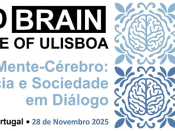Por Michael Stech (Naturalis Biodiversity Center, P.O. Box 9517, 2300 RA Leiden, The Netherlands).
Island ecosystems are unique in their biodiversity, evolutionary constraints, and vulnerability to environmental changes. Analysing patterns of diversity between different groups of organisms based on multi-taxon inventories are expected to improve our knowledge of the biogeography, evolution, and ecology of island ecosystems. During expeditions to Mount Kinabalu (Sabah, East Malaysia) in 2012 and Saint Eustatius (Caribbean Netherlands) in 2015, teams of researchers and students from Naturalis Biodiversity Center and collaborating institutions sampled vascular and non-vascular plants, fungi, vertebrate and invertebrate groups for comparative biodiversity analyses. While the Borneo project investigated the evolutionary routes to endemism based on dated molecular phylogenies and biogeographic analyses, the main aims of the St. Eustatius study are to compare patterns of species diversity on a small tropical island, and to infer which taxonomic groups can stand as surrogates for others in conservation assessment. This presentation will give an overview of the multi-taxon sampling approach, DNA barcoding and cyberdiversity-based inventory of megadiverse taxa, and results of comparative biodiversity analyses, focusing on the St. Eustatius study.





















